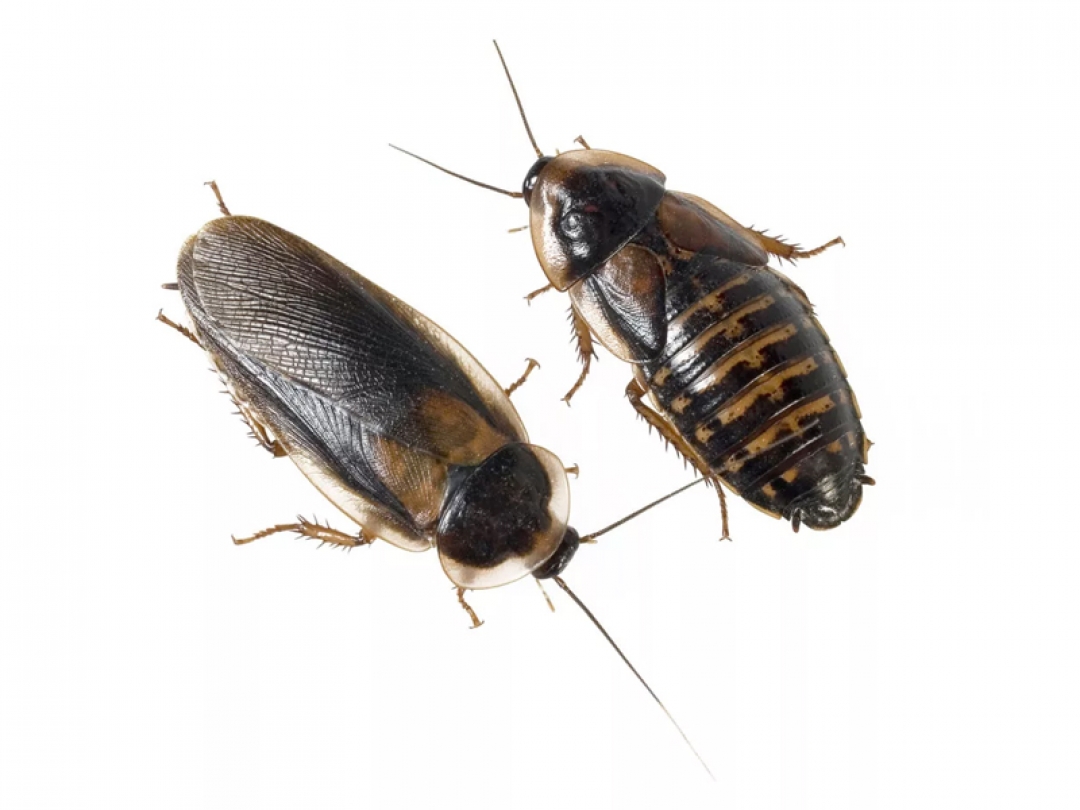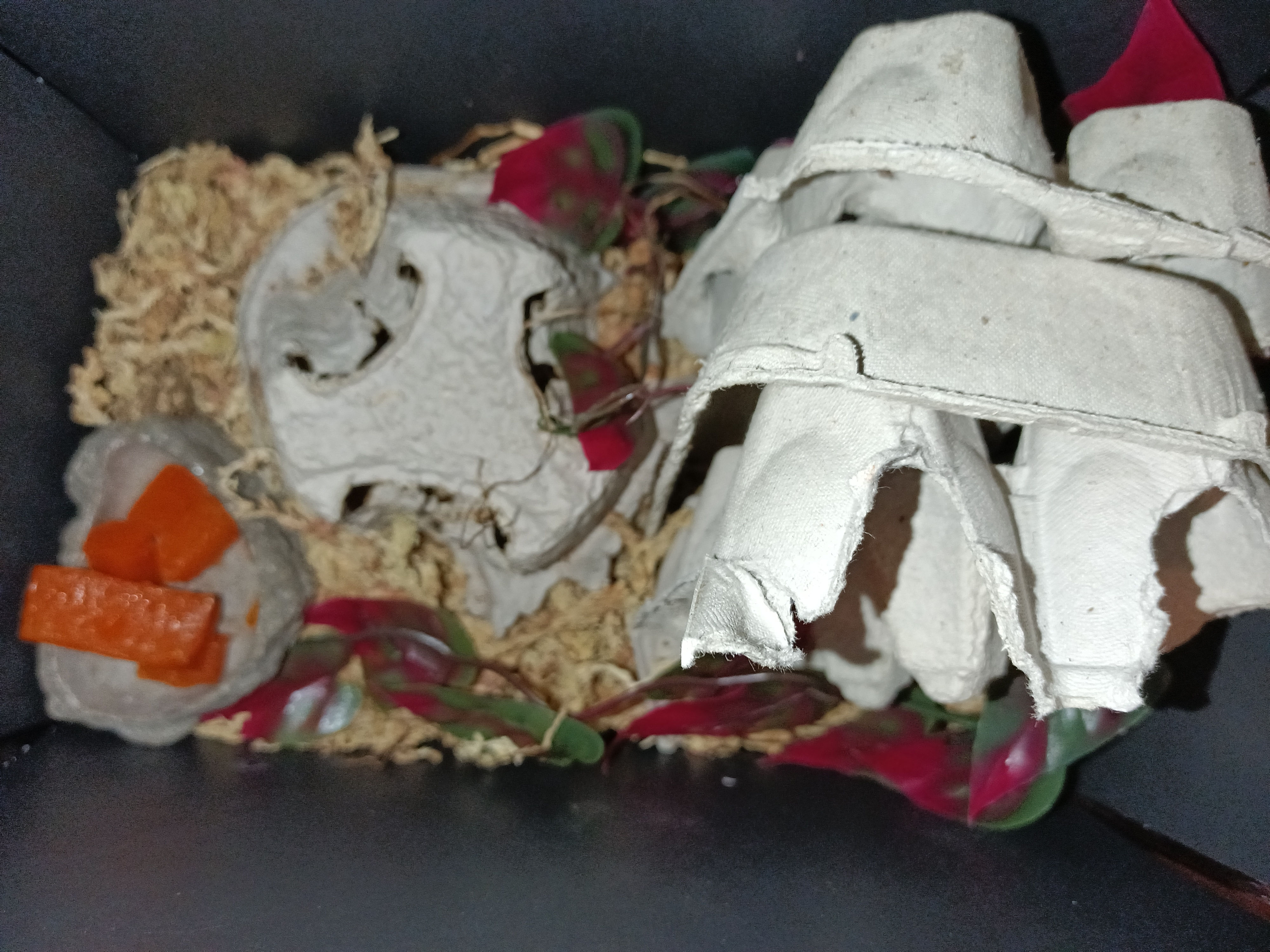Nature and Wild Life

Yes. They are roaches. Also jokingly called Dubya roaches or Dubai roaches even though they are not from the United Arab Emirates. Dubias original come from Central and South America and are primarily from warm and humid environments since that seems to be preference for breeding and molting. Unlike the common house roaches such as Periplaneta americana or Blattella germanica, these guys are some of the cleanest inverts especially for a roach. Hence why they are a staple feeder for the exotic pet hobby in addition to their nutritional value as feeders. Oh yeah and they are basically harmless to humans (unless you have some sort of roach allergy) and your pets.
In my opinion, if I had to keep one feeder over any other kind for my insectivore pet (which isn’t recommended as having a variety of food for your pet does have some benefits), it would be Dubia roaches hands down. They are some of the hardiest feeder insects to take care of. They will tolerate temperatures from a range of 50F (10C) to as high as 90F (32.22C approx.). They will thrive ideally in temperature ranges in the 70F (21.11C approx.) range and higher which will allow them to grow bigger and breed easily. Usually my room is somewhere around 72F (22C) so I don’t use any sort of heating appliance though in the most extreme temperatures around winter time, my room does drop as low as 60F (15.56C approx). This isn’t a big deal as my Dubia colony isn’t that large to begin with and they are capable of handling these kind of temperatures. Which leads me into my next point.

Setting up a Dubia colony (small or large) isn’t very difficult. All you need is some kind of container with a lid and ventilation. I found that a large critter keeper (pictured above) was more than ideal for a small colony. Some people like to use those large plastic storage tubs and modify them with ventilation for breeding larger colonies. Since I’m just feeding one insectivore (My Aphonopelma seemanni tarantula), I only need a small colony of somewhere around 15-30 roaches. Besides, just like tarantulas, Dubia roaches prefer small tight spaces as opposed to large open spaces since they like to hide anyways. Giving them a place to hide is very important as like most basement dwellers, they can’t stand any kind of light. Most keepers/breeders like to use egg cartons similar to the one I use since it provides them with plenty of shelter and hiding spots. Any cardboard hide would work just fine. If you are doing a bio-active enclosure (which does take some work since you could have the risk of mold if you don’t have springtails and isopods to serve as a clean up crew for your colony) you can use cork bark or any kind of natural hide provided it does not mold easily nor contains any pesticides. To help make their enviroment darker, I placed black construction paper on all four sides of the enclosure and taped a small piece onto the clear feeding door for the critter keeper. In addition, I don’t keep the enclosure out in the open but in one of those storage containers
Although it’s completely optional, I like to add sphagnum moss to some of my feeders primarily to serve as decorations alongside my fake plants and to provide some moisture to my enclosures. Dubias do not have a strong smell but they do have a minor scent so adding sphagnum moss helps hide that scent a bit in my experience. You’ll also notice I have a food tray in my enclosure as well. This is just a place where I can easily put food so that it’s not all over the place. One of the nice things about most feeder insects and especially roaches is that they’ll thrive on a huge variety of foods and especially left overs. I found that fruits and veggies not only provide nutrients but also give hydration to my roaches so you don’t have to put a water bowl and risk mold outbreaks. Carrots in particular have proven to be a great source of food and hydration for my roaches since they seem to really love eating those. Orange “cricket” slices are also a good food source. Oh and for protein, you can use goldfish flakes or dog/cat food pellets. Just make sure to clean out the food after a week before placing in fresh and new food. Fun fact, dubias will eat dead roaches in their colony so you don't have to worry about enclosure maintence as they'll do it for you. Though it wouldn't hurt to spot clean the roach bin every so often.
At the time of writing this blog, dubias are pretty easy to obtain assuming you don't live in a state like Florida where the importation of Dubia roaches are banned. You can find sellers on ebay that sell them in bundles for not alot of money. Some pet stores might have them but I found that none of my big chain pet stores with the exception of some exotic pet stores sell them. I think they are superior to crickets which are more common since they are more hardy, are not prone to die within a few weeks like crickets, don't smell as awful as crickets, and aren't as savage as crickets. There are horror stories of some invert and reptile owners having their pets harmed by crickets or even outright killing their pets. Some crickets are even known to carry parasites! Hence why I don't bother with buying and raising crickets anymore. To be honest, I don't find them as unsettling as crickets and especially superworms. Like I said before, these are not like the roaches you'd find as pests around your house. They are clean and completely harmless. You can also keep them as pets though they are not nearly as impressive as some of the larger roaches like the Madagascar hissing cockroach(Gromphadorhina portentosa).
Return to Catalog